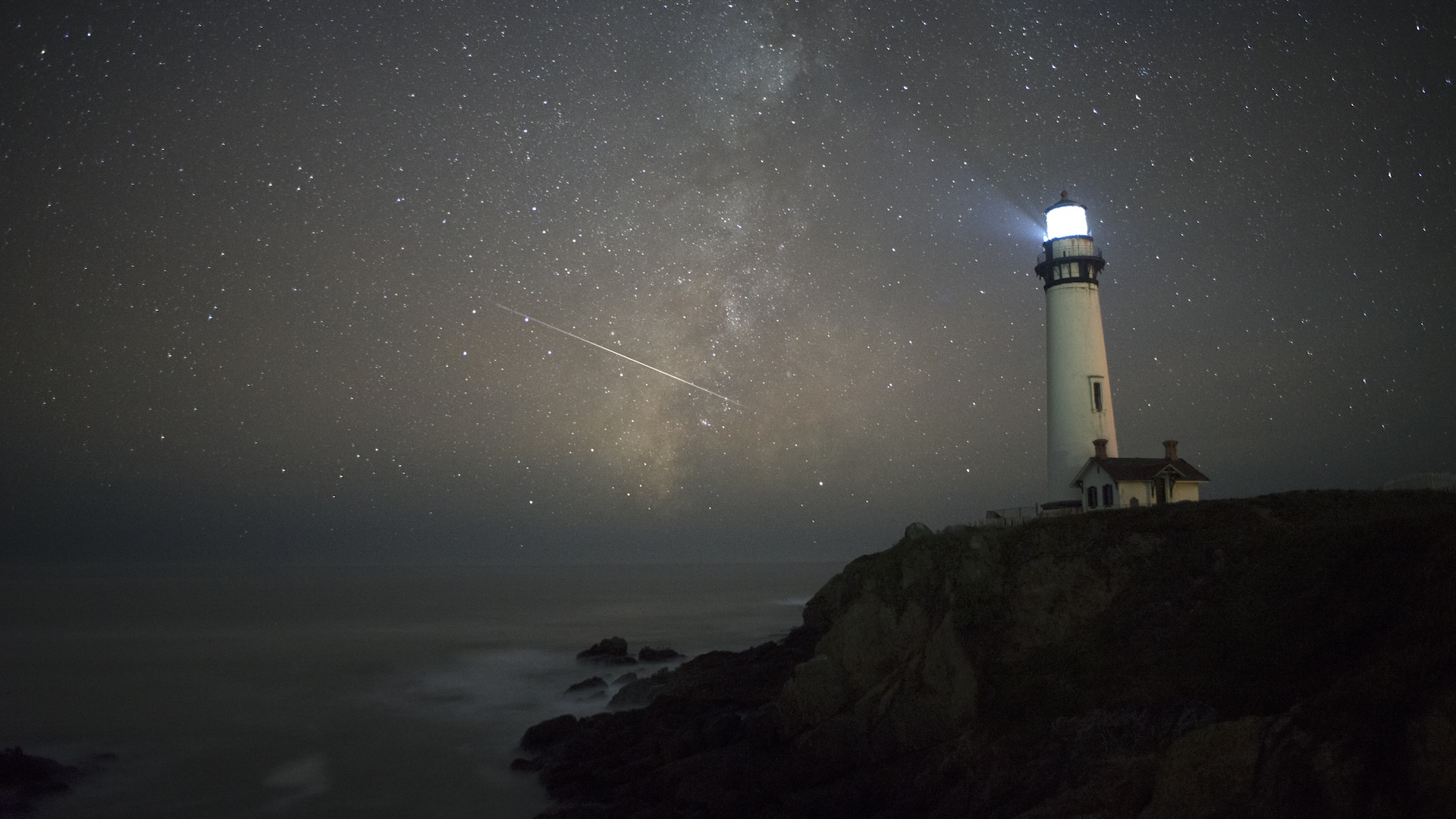Orionid meteor shower 2024: When to see 'shooting stars' from Halley's comet next week
The Orionid meteor shower will peak this week as Earth busts through a stream of meteoroids left in the inner solar system by the famous Halley's comet.

The annual Orionid meteor shower — a dusty result of the trip Halley's comet makes around the sun every 76 years, on average — will peak this week just as the famous constellation it's named after rises into the autumn sky.
Active from Sept. 26 through Nov. 22, the Orionids will peak in the early hours of Monday, Oct. 21, when around 23 "shooting stars" are expected per hour, according to the American Meteor Society. The precise peak is predicted to occur at 1 a.m. EDT (0500 GMT).
However, a waning gibbous moon will be in the sky for most of the night, providing less-than-ideal viewing conditions. (The full "Hunter's moon" rises days before, on Oct. 17.) According to the American Meteor Society, the bright moonlight will "severely hamper" views of this display. Therefore, you probably won't want to bother finding dark skies to view this year's event. Rather, it may be more advantageous to watch the 2024 Orionids from home, where you can hope to see a particularly bright shooting star.
According to NASA, the Orionids are one of the most beautiful showers of the year. These meteors are known for their brightness and speed. The Orionids are swift movers, predicted to strike Earth's atmosphere at 41 miles per second (66 kilometers per second), or around 148,000 mph (238,000 km/h).
Related: Halley's comet has begun its return journey to Earth
Meteor showers are caused by clouds of dust and debris left in the inner solar system by comets as they enter and leave to loop around the sun. As Earth flies through them, its atmosphere strikes the material, causing shooting stars.
The Orionids are one of two annual meteor showers caused by Halley's comet, the only known naked-eye comet that can theoretically be seen twice in one human lifetime. Last in the inner solar system in 1986 and next due to visit in 2061, Halley's comet also causes the Eta Aquarid meteor shower, which peaks in early May each year. Both showers can be seen from both the Southern and Northern hemispheres.
Get the world’s most fascinating discoveries delivered straight to your inbox.
Despite their far-off origin, the Orionids appear to come from a patch of sky close to Betelgeuse, a red giant star in the constellation Orion. The constellation is best known for Orion's Belt, which comprises three equally spaced stars: Alnitak, Alnilam and Mintaka. Also in the region are some of the brightest stars in the night sky, such as Sirius, Rigel, Procyon and Capella. Orion will reach its highest point in the sky around 2 a.m. in the Northern Hemisphere during the peak of the Orionids.

Jamie Carter is a freelance journalist and regular Live Science contributor based in Cardiff, U.K. He is the author of A Stargazing Program For Beginners and lectures on astronomy and the natural world. Jamie regularly writes for Space.com, TechRadar.com, Forbes Science, BBC Wildlife magazine and Scientific American, and many others. He edits WhenIsTheNextEclipse.com.


